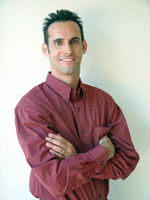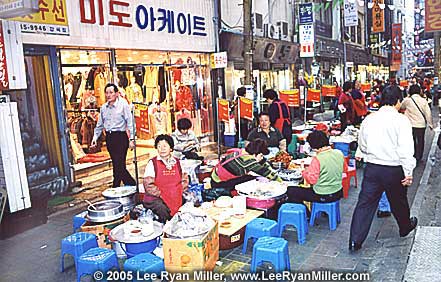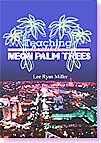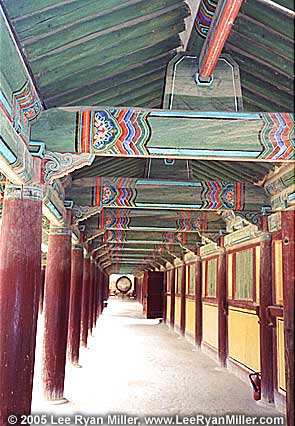|
|
Lee's Adventures on Semester at Sea ® PUSAN, SOUTH KOREA
|
||
|
Introduction
|
Next we stopped at the Jagalchi fish market. This was a huge outdoor market where fresh seafood was sold. The driver got into a shouting match with a uniformed man on the sidewalk as he attempted to park the bus near the market. As we exited the bus, the two men got into a shoving match, then a fistfight. Jim Berry, a business professor, broke it up. It turns out that our tour bus driver had parked the bus at a public bus stop, against the orders of the official. The driver had been itching for a fight, it seems, and Jim had to do a lot of convincing to keep the guy on the bus, rather than jumping out again to hit the guy. I’ve noticed that Koreans seem to have fiery tempers. Perhaps it is from all the spicy kimchee they eat. I don’t know. I
decided to leave the tour, rather than take the bus back to the ship.
I had lunch at a buffet restaurant suggested by the tour guide.
I had a nice lunch, and ran into Sheila, my next-door neighbor, and
Lousie, the assistant librarian.
We left Sheila at a salon to get a pedicure, while Louise and I
went shopping. I
needed some warm clothes for Alaska.
All I had brought with me was a light jacket and some sweatshirts.
Near the fish market was a market selling all sorts of things,
including clothing.
Louise and I explored the area. Unfortunately,
April is a bad time to shop for winter clothes in Pusan.
We mostly saw spring and summer clothes.
But I was able to find a very inexpensive backpack to replace my
fraying one, as well as a nice designer knock-off handbag for Beth.
Louise helped me pick out the latter. After
we met Sheila – toenails freshly painted – we headed toward the subway
station.
I had read that there was more shopping underground between the
stops. It
started to rain, and was getting quite cold.
I bought an umbrella, since I had left mine back on the ship.
It cost less than $5. In
the underground shopping area in the subway, I bought a suede coat.
I had hoped to find something more like a ski jacket, but this was
the only warm jacket that I could find.
My companions liked it, and I got several compliments after I
returned to the ship.
So I guess it was a good choice.
It cost me only about $50.
I also bought a new pair of black shoes, again for about $50.
Afterwards, the three of us took a taxi back to the ship. The
next day I was scheduled to take a day trip to Gyeongju, an ancient
capital of Korea during the period of the Shilla dynasty, some 1300 years
ago. We
visited the burial mounds of the ancient kings.
We also went to a museum containing artifacts from some of the
excavated tombs, plus ancient artwork.
There were thousands of school kids at the museum.
Our tour guide explained that most kids in South Korea visit this
museum at least twice on school field trips.
The kids went around asking us to sign pieces of paper or
notebooks.
It was pretty strange signing autographs for dozens of Korean
school kids.
But the kids seemed happy.
I think that they were competing to see who could get the most
signatures.
We
also visited a beautiful temple.
Korean Buddhist temples are sort of like Japanese ones, only they
are a bit more rustic in design.
After a great buffet lunch, we visited a collection of shops
selling traditional Korean arts and crafts.
A potter demonstrated and explained how celedon pottery is made.
This pottery is traditionally pale green with inlaid designs.
I bought a couple of pieces. That
evening, after we returned, I checked my e-mail at an Internet café
before going to bed. On
the next day, I participated in an organized trip to Andong, a rural area.
This trip was rather disappointing.
We were gone for some 13 hours, and we spent most of that time on
the bus.
We had a nice traditional Korean lunch.
We visited a traditional wooden house where a rich Korean family
lived hundreds of years ago.
We also visited Bongjeongsa Temple, an ancient wooden temple.
In addition, we visited Hahoe Mask village, a traditional Korean
village known for its wooden masks.
This place was very pretty.
The wooden structures were preserved from the 16th
century and there were no modern structures there.
These places were all quite beautiful.
But I would have preferred going just to the mask village, perhaps,
rather than spending the whole day driving around.
We stopped for only about an hour at the mask village and the
temple. The
traditional house warranted only a half-hour stop.
We spent the vast majority of our time traveling the long distances
between these destinations.
And the guide did not do very much interpretation of the sites we
visited. I
did notice one very interesting thing about development in Korea.
I noticed clusters of high-rise condos and apartments bordered by
rice fields.
There just did not seem to be the sort of urban sprawl common to
the US. I
asked the guide about this.
He said that they have very strict zoning laws in Korea enforced by
the national government.
Large areas of land are preserved as farmland, and the law
encourages the development of high-rises to conserve space.
I think this is great.
Much better than developing prime farmland into one- and two-story
single-family houses, as has been the trend in California. On
my next day I got a late start.
I was busy scheduling a visit to a US army base.
Upon arrival in each port, we usually receive a mandatory briefing
by US diplomats on the country we are visiting.
Originally, I had scheduled a follow-up briefing by US diplomats to
follow the mandatory briefing.
The diplomats were supposed to discuss in detail security issues on
the Korean peninsula and elsewhere in NE Asia.
But the diplomats cancelled at the last minute for reasons unknown.
We had no regular or follow-up briefing in Pusan, unlike other
ports.
My
students are required to prepare 3 reports on field (in port) activities
related to their course.
I was concerned about the number of opportunities for such
activities related to my World Politics (international relations course),
after the itinerary changes and the cancellation of the follow-up
briefing.
So I decided to try to schedule a visit to a US military base in
South Korea. I
contacted an Air Force base on the Internet, and they referred me to
someone in the office responsible for all US military bases in South
Korea. This
person, in turn, sent out e-mails to a list of base commanders. It
took several days, but eventually the commander of a small US Army base in
Pusan e-mailed me an invitation.
I spent the morning of my second-to-last day making the
arrangements. That
afternoon I went to a huge park on a hill overlooking Pusan.
I went with Chad and Cadie, plus Ryan, the staff audio-visual
technician.
We visited a botanical garden and took the aerial tram up to the
ruins of a fortress high above the city.
There were great views.
When I returned that evening, I noticed that 59 people had signed
up for the 30 slots on the trip to the Army base. The
next morning a bus picked us up for the trip to the base.
I was disappointed that despite the many sign-ups, only 22 people
actually showed up at the bus. We
drove to Camp Hialeah, in the center of downtown Pusan.
It was a funny location.
It looked like an oasis of green lawns and one- and two-story
buildings in the middle of high-rise buildings.
Apparently, it had been a race-track during the era of Japanese
occupation that began in 1910.
During World War II, the Japanese made it into a military base.
When the US replaced the Japanese after World War II, they named it
Camp Hialeah after a racetrack in Florida. It
was a very small base, with only about 450 soldiers.
It was responsible for defending the port, and was supposed to
serve as a staging area for personnel and equipment moving around in the
event of war.
The commander, Lt. Colonel Ludwig, gave us a briefing on the
mission of the base.
We had lunch in the restaurant on the base.
Standard American fare:
hamburgers, pizza, etc.
We returned to the ship in mid-afternoon.
I checked my e-mail one last time at an Internet café before we set sail that night.
|
|
|
|
HOME | ABOUT DR. MILLER | POPULAR WORKS | SCHOLARLY WORKS | APPEARANCES | SEMESTER AT SEA | PHOTOS | CONTACT LEE |
|
|
|
Copyright ©
1998 - 2009 Lee Ryan Miller |





